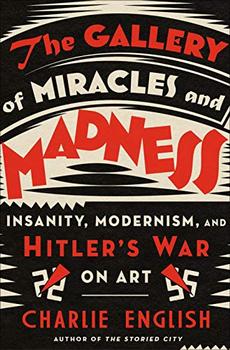Summary | Excerpt | Reviews | Beyond the book | Read-Alikes | Genres & Themes | Author Bio

The Race to Rescue a Nation's Treasures from the Nazis
by Robert M. EdselAn unforgettable story of epic thievery and political intrigue, Saving Italy is a testament to heroism on behalf of art, culture, and history.
When Hitler's armies occupied Italy in 1943, they also seized control of mankind's greatest cultural treasures. As they had done throughout Europe, the Nazis could now plunder the masterpieces of the Renaissance, the treasures of the Vatican, and the antiquities of the Roman Empire.
On the eve of the Allied invasion, General Dwight Eisenhower empowered a new kind of soldier to protect these historic riches. In May 1944 two unlikely American heroes - artist Deane Keller and scholar Fred Hartt - embarked from Naples on the treasure hunt of a lifetime, tracking billions of dollars of missing art, including works by Michelangelo, Donatello, Titian, Caravaggio, and Botticelli.
With the German army retreating up the Italian peninsula, orders came from the highest levels of the Nazi government to transport truckloads of art north across the border into the Reich. Standing in the way was General Karl Wolff, a top-level Nazi officer. As German forces blew up the magnificent bridges of Florence, General Wolff commandeered the great collections of the Uffizi Gallery and Pitti Palace, later risking his life to negotiate a secret Nazi surrender with American spymaster Allen Dulles.
Brilliantly researched and vividly written, Saving Italy brings readers from Milan and the near destruction of The Last Supper to the inner sanctum of the Vatican and behind closed doors with the preeminent Allied and Axis leaders: Roosevelt, Eisenhower, and Churchill; Hitler, Göring, and Himmler.
An unforgettable story of epic thievery and political intrigue, Saving Italy is a testament to heroism on behalf of art, culture, and history.
As with any undertaking this large, the first sections Saving Italy set the stage and characters for the reader. Because of this, they are detail-heavy and do not move as quickly as the rest of the book. However this is merely a temporary status. Once the scene is set, what could have been a dull, dry exercise in an obscure area of history is rendered in vivid strokes by Edsel’s prose. He is adept in using the drama of real life to lend interest to his topic...continued
Full Review
(523 words)
This review is available to non-members for a limited time. For full access,
become a member today.
(Reviewed by Heather A Phillips).
The Last Supper, completed by Leonardo da Vinci in 1498, is one of Western civilization's great cultural touchstones. Housed in the refectory of the Dominican Convent of Santa Maria delle Grazie in Milan, this late 15th century work was commissioned as part of planned renovations to the convent and church buildings by da Vinci's patron, Ludovico Sforza, the Duke of Milan. The painting, which measures about 15 by 39 feet, depicts the desciple's immediate reactions following Christ's announcement that one of them will betray him before dawn. In spite of the emotional chaos that rings throughout the scene, the composition is ordered and serene. Christ's head is at the center of the composition, and the angling of the walls within the picture ...
This "beyond the book" feature is available to non-members for a limited time. Join today for full access.

If you liked Saving Italy, try these:

by Derek B. Miller
Published 2025
From the Dagger Award–winning author of Norwegian by Night comes a vivid, thrilling, and moving World War II art-heist-adventure tale where enemies become heroes, allies become villains, and a child learns what it means to become an adult—for fans of All the Light We Cannot See.

The Gallery of Miracles and Madness
by Charlie English
Published 2021
The untold story of Hitler's war on "degenerate" artists and the mentally ill that paved the way for the Holocaust.
Be careful about reading health books. You may die of a misprint.
Click Here to find out who said this, as well as discovering other famous literary quotes!